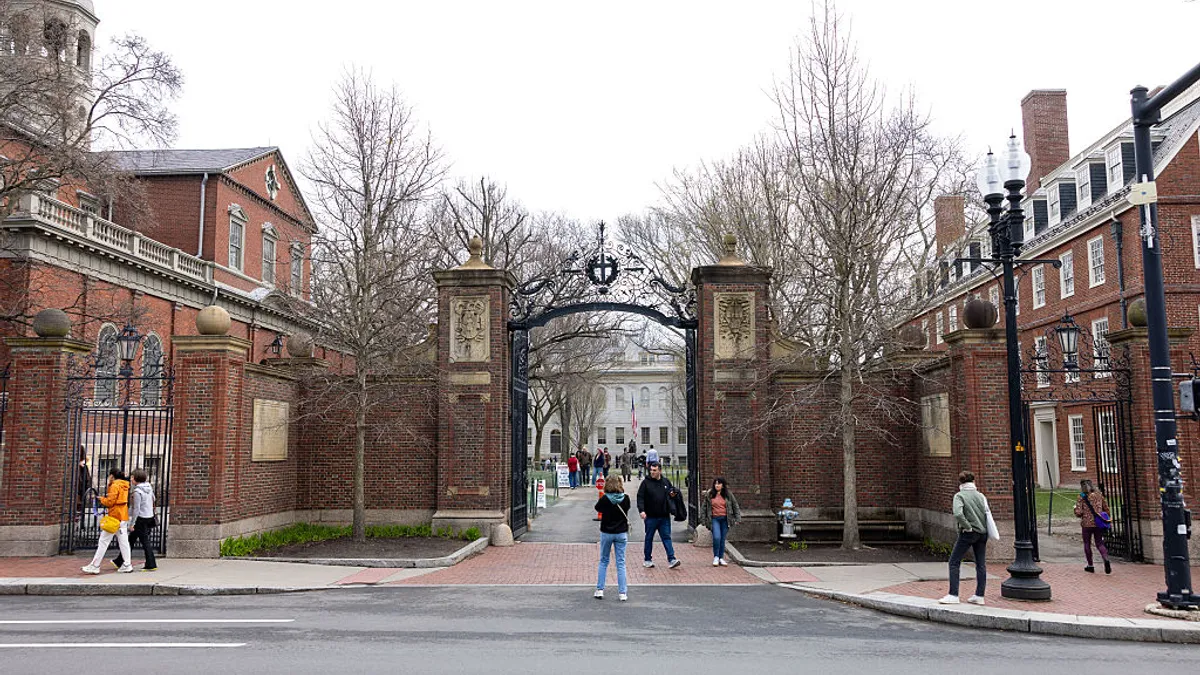The author of a new report that analyzes success rates of Latino students stresses that there is no “magic bullet” for colleges and universities to use to improve their own metrics, and what works at one school may not be applicable for all. However, institutions that prioritize equity and make efforts to measure their progress usually yield positive results.
“What we’ve learned over time is that it comes down to leaders on that particular campus prioritizing student success and equity,” Andrew Nichols, the director for higher education research and data analytics for The Education Trust, said about his new report, "A Look at Latino Success." “They make sure those working for them take this seriously.”
The new report from the Education Trust analyses the success rate gaps across different kinds of institutions, including public and private schools, as well as those designated as Hispanic Serving Institutions by the federal government. (The designation is given a school that has at least 25% of its undergraduate population identiting as Latino.)
Nichols said the higher ed industry is not meeting adequate completion rates for Latino students, noting only 17.8% of Latino adults between 25 and 34 years old hold bachelor’s degrees, compared with 43.7% of white adults. The gap between college graduation rates of Latinos and whites closed by about 3% between 2002 and 2015, and Nichols stressed that administrators must look to their institutions' data to identify problems.
"Data can really show you what the challenges are,” he said. “Is it a financial aid issue? Are you giving too much merit-based aid and not enough need-based aid?”
When citing the low percentage of Latino young adults with bachelor’s degrees, Nichols noted that immigration has played a factor, with individuals arriving in this country after the traditional postsecondary education age. Nichols said it was incumbent upon public and private colleges to find pathways to degree attainment for nontraditional learners.
“We’ve got to figure that out, because we’re really talking about a population overrepresented in Latino students,” he said. “Higher ed isn’t really accommodating with making that easy. We have to make it work for a population that we missed the first time around."
Why UC-Riverside is a top performer
The report also lists the 10 top- and bottom-performing institutions for Latino learners. University of California-Riverside was listed as No. 8 on the top-performing list, with a 66.4% graduation rate average for enrolled Latino students and a 2.7% graduation gap between Latino and white students. The school was one of only three institutions to also be named a top-performing school for black student success rates in a previous Education Trust report released in March.
Like Nichols, UC-Riverside Associate Provost Ken Baerenklau stressed that there is no specific formula for elevating success rates. But he said: "We benefit from having a long history and reputation of valuing diversity and being an inclusive place. ... It draws people who have committed their careers to mentoring students from underrepresented backgrounds. ... We’ve accumulated that capital that has infused with our reputation. That can take a long time to build up, but it certainly is essential to driving these outcomes.”
Baerenklau also cited the importance of campus groups like the Chicano Student Programs, which was started in 1972. UC-Riverside also requires potential new faculty to submit a “diversity statement” with their application, detailing their commitment to achieving diversity and equity on college campuses, specific ways they have promoted diversity in the past, and ideas for how to improve diversity at the Riverside campus.
Baerenklau said he believes the industry as a whole is coming to see the importance of achieving such equity. “We’re looking at parity across graduation rates as evidence that campuses really are able to make all boats rise, and that the average isn’t hiding these disparate outcomes,” he said. “I like that we’re digging into the data, and not just relying on averages.”
HSIs have higher success rates
According to the recent Education Trust report, there are approximately 472 Hispanic Serving Institutions, more than half of them being four-year universities. Of those, 103 institutions were included in the 613 public and private universities analyzed in the report, though about 44% of the full-time, first-time Latino students who graduated from the 613 schools in 2015 graduated from an HSI.
The report found that HSIs had slightly higher graduation rates for Latino students, and the completion gaps between Latino and white students were smaller at HSIs than other institutions. The report emphasized that institutions seeking to raise the graduation rate of enrolled Latino students could follow examples set by successful HSIs, including enrolling a “critical mass” of Latino students, hiring a diverse staff and touting the importance of “culturally relevant programs, policies and curricula.”





















